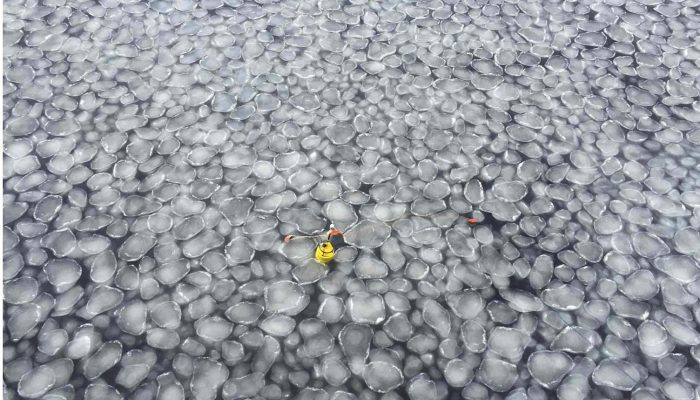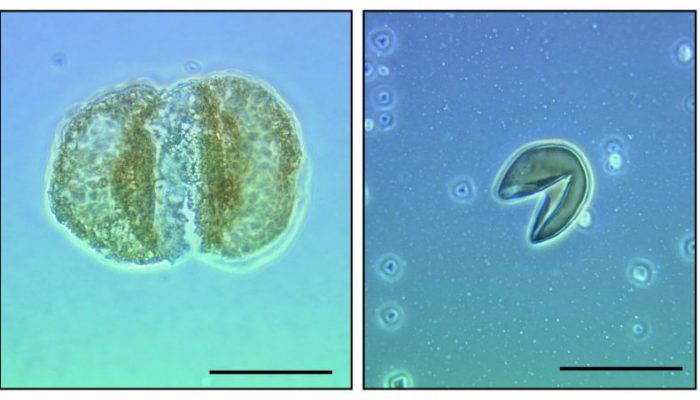The European Geosciences Union (EGU) General Assembly 2018 took place in Vienna, Austria, from 8–13 April 2018 and brought together geoscientists from all over the world to one meeting covering all disciplines of the Earth, planetary and space sciences. If you are an early career research, convening a session at the EGU General Assembly can seem intimidating, especially if you are a first-time con ...[Read More]
Natural Hazards
Permafrost fever, do we need a doctor?
Today we will shed some light on permafrost thanks to Dr. Dmitry (Dima) Streletskiy. Dima is an Assistant Professor of Geography and International Affairs at the George Washington University. He leads several research grants focusing on various aspects of climate change and its impacts on natural and human systems in the Arctic. Streletskiy is the President Elect of the United Sates Permafrost Ass ...[Read More]
Cryospheric Sciences
Image of the week — Making pancakes
It’s pitch black and twenty degrees below zero; so cold that the hairs in your nose freeze. The Arctic Ocean in autumn and winter is inhospitable for both humans and most scientific equipment. This means there are very few close-up observations of sea ice made during these times. Recently, rapidly declining coverage of sea ice in the Arctic Ocean due to warming climate and the impending likelihood ...[Read More]
Geomorphology
Diving under the scientific iceberg
written by: Anne Voigtländer, Anna Schoch, Elisa Giaccone, Harry Sanders, Richard Mason, Johannes Buckel At the EGU General Assembly international researchers from all earth science communities gather and share their most recent endeavors. This year, we, a group of European young geomorphologists, tried a new session format to address challenges we all face in our research, ranging from inaccessib ...[Read More]
Geodynamics
New faces for 2018 – 2019
We found some bright new faces at the EGU GA this year, so we need to make some introductions! Both the Early Career Scientist Team and the Blog Team have expanded and it is my absolute delight to introduce to you our 2(!) ECS Representatives for 2018-2019 and our new addition to the blog team (also see this post if you have forgotten the other members of the blog team)! ECS Representatives Nico S ...[Read More]
Cryospheric Sciences
Image of the Week — Seasonal and regional considerations for Arctic sea ice changes
The Arctic sea ice is disappearing. There is no debate anymore. The problem is, we have so far been unable to model this disappearance correctly. And without correct simulations, we cannot project when the Arctic will become ice free. In this blog post, we explain why we want to know this in the first place, and present a fresh early-online release paper by Ingrid Onarheim and colleagues in Bergen ...[Read More]
Solar-Terrestrial Sciences
Report from the 2018 EGU General Assembly
Last week the 2018 General Assembly were held in Vienna. Gathering 15 075 scientists from 106 countries, this is the most important EGU event throughout the year. Summarizing what happened during the week is an impossible task, as a meeting like this is way more than the 666 individual sessions convened and the 11 128 posters presented during the week. However, in this post I will point to some of ...[Read More]
Geodesy
EGU General Assembly – an adventure for newbies
One day in January, we heard it through the grapevine that we were supposed to submit abstracts to an event called EGU. So we asked ourselves: What exactly is EGU? Our colleagues told us: ‘EGU is a huge, international conference worth going. And you will have a lot of fun.’ So we submitted our abstracts and hoped for the best. Three months later, we entered the airport with a poster box and some o ...[Read More]
Geodynamics
Meeting, mentoring and awards at EGU18
Having just about recovered from the session-packed, networking-fest, coffee-filled, schnitzel-test that was EGU2018 (8-13th April, Vienna), it is now possible to reflect and look towards upcoming dates. Earlier posts in the blog have described some of the GD side event highlights. For this week’s post, I have summarised some key points from the GD Division meeting, the EGU Mentoring program ...[Read More]
Stratigraphy, Sedimentology and Palaeontology
The world about pollen
Pollen – for many people rather an irritant across spring, summer and autumn when trees and flowers are in bloom. Individual pollen grains are between a few µm (micrometre, which is one thousandth of an mm) and >130 µm in diameter. This size range is impossible to see with the naked eye unless the pollen grains are clumped together, or when pollen is dispersed as powder into the air on a dry su ...[Read More]










